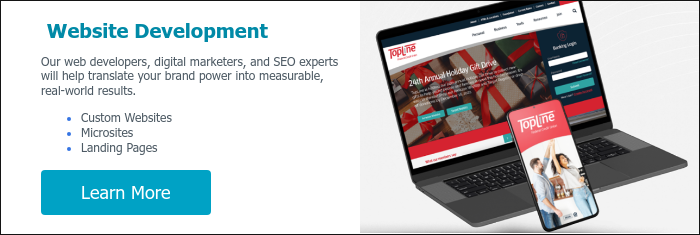Build a Strong Digital Presence with Strategy, Traffic & Optimization
Streamworks Blog

In today’s digital-first world, a strong online presence isn’t just nice to have; it’s essential. Whether you’re a nonprofit, business, or healthcare organization, your website and online channels are often people’s first touchpoints with your brand. But a successful digital strategy doesn’t happen overnight. It takes intention, structure, and a phased approach.
A well-structured site architecture, mobile responsiveness, fast load times, and accessibility are not just technical checkboxes—they’re essential components that support future marketing success. As part of technical SEO best practices, it’s important to continually improve site structure by optimizing URL formats and creating XML sitemaps to help search engines better crawl and index your site.
In this post, we’ll walk you through three essential phases to building a powerful and sustainable digital presence: foundation, traffic, and optimization.
Phase I: Build a Solid Foundation for Your Target Audience
Every successful online strategy starts with a strong foundation. This phase is about understanding who you are as a brand and how you want to be perceived digitally. It begins with defining your voice, values, and visual identity. From there, it's about translating that identity into a user-centered website that looks good and functions smoothly on every device.
Think of your website as your organization's digital home. Just like a physical space, it should be welcoming, intuitive, and reflect your brand's personality. Your site must communicate what you do, who you serve, and why it matters—all while providing a seamless user experience. If your site is challenging to navigate or doesn't reflect your brand's essence, you risk losing the interest of your visitors within seconds.
This phase also includes the foundational work that allows your digital strategy to scale. A well-structured site architecture, mobile responsiveness, fast load times, and accessibility are not just technical checkboxes—they're essential components that support future marketing success.
Improving Website Speed and Mobile Responsiveness
Website speed is a crucial ranking factor for search engines and a key element of search engine optimization. A fast-loading site not only keeps visitors engaged but also signals to search engines that your website offers a quality user experience. Slow websites can drive potential customers away, leading to higher bounce rates and lower conversion rates, which ultimately impacts your website traffic.
To boost your site’s speed, start by compressing images and using image compression tools to reduce file sizes without sacrificing quality. Minifying CSS and JavaScript files, as well as leveraging browser caching, can further enhance load times. Since most users now access web pages via mobile devices, ensuring your site is fully responsive is essential. Responsive design adapts your content to fit any screen size, providing a seamless experience for both desktop and mobile users.
Tools like Google’s Lighthouse can help you test your website’s performance on mobile devices and offer actionable recommendations for improvement. By prioritizing website speed and mobile responsiveness, you’ll not only improve your search engine rankings but also increase website traffic and boost conversion rates.
Want a deeper dive into Phase I?
Phase II: Drive Website Traffic to Your Website
Once your digital foundation is in place, the next challenge is getting the right people to find it. A beautiful website won’t accomplish much if no one knows it exists. That’s where Phase II comes in, generating traffic through digital advertising and social media engagement.
Pay-per-click (PPC) campaigns and social media ads help you meet your audience where they already are. These platforms allow for highly targeted messaging, meaning you can reach users based on location, interests, behavior, and more. Paid strategies work quickly to generate visibility, and when paired with compelling messaging and creative, they can yield immediate results. Other strategies, such as influencer marketing, guest posting, and additional digital marketing tactics, can further enhance your online visibility.
This phase isn’t just about numbers; it’s about attracting the right audience. By using audience segmentation and strategic content distribution, you ensure that your budget is working efficiently. It’s also a time to start testing: A/B testing headlines, creative assets, and calls to action helps refine your messaging and learn what truly resonates with your audience.
Along the way, analytics tools give you the power to track how visitors interact with your ads and site. This real-time feedback helps you adjust campaigns quickly and effectively, turning visitors into engaged users and eventually, loyal supporters or customers. These efforts ultimately help attract more customers to your business.
Enhancing User Experience to Boost Conversions
A seamless user experience is at the heart of any successful digital marketing strategy. Search engines reward websites that are easy to navigate, informative, and tailored to the needs of their target audience. By focusing on intuitive site structure, clear content, and compelling calls-to-action, you can guide visitors toward taking meaningful actions—whether that’s making a purchase, signing up for a newsletter, or contacting your team.
Understanding your target audience and their search intent is key to creating content that resonates. Use SEO tools like Google Analytics to monitor key metrics such as bounce rates, time on page, and conversion rates. These insights reveal how users interact with your site and highlight opportunities to improve engagement.
By continually refining your website content and design based on data, you can create a more engaging experience that drives higher conversion rates, increases website traffic, and improves your search engine rankings. Ultimately, a user-friendly website not only attracts more visitors but also turns them into loyal customers.
Phase III: Optimize & Expand Through Search Engine Optimization
After your website attracts visitors, the focus shifts to organically sustaining and growing that momentum. Phase III is about long-term visibility, helping people discover your brand naturally through search engines. This is where content and search engine optimization (SEO) come into play.
Search engines like Google prioritize websites that provide fresh, relevant content and a great user experience. Blogging is one of the most effective ways to deliver both. Creating a blog post targeting key topics and relevant keywords helps address user intent and appear in more search queries, increasing your chances of ranking for organic search results.
By writing blog posts that answer common questions, solve problems, or share expert insights, you provide value to your audience and increase the likelihood that search engines will rank your pages higher. Effective content and SEO strategies start with keyword research—using tools like Google Keyword Planner to identify the right keywords for each specific page ensures your content aligns with what users are searching for.
But content alone isn’t enough. SEO involves refining behind-the-scenes elements like keywords, meta descriptions, image alt text, and site structure. Optimizing the meta title, meta description, and title tag for each given page improves organic search results and click-through rates. A good meta description acts as a concise, appealing summary that encourages users to click through from search results. These details help search engines understand and connect your content with the right searches. Creating pillar pages that serve as central hubs for key topics, and linking to other pages and topic clusters, further improves on page seo and content quality. When publishing content, regularly link to other pages within your site, as well as to other websites and relevant sources, to enhance authority and user experience. Link building and acquiring quality backlinks from other sites as part of off page seo are essential for improving brand visibility and organic search rankings. Finding broken links and fixing or replacing them helps improve site quality and SEO performance. Avoiding duplicate content and ensuring each specific page is unique prevents SEO penalties. Make your site accessible for screen readers by using descriptive alt text and links. Continually improving SEO by targeting more keywords, monitoring content quality, and aligning with user intent will help sustain and grow your organic search presence.
When done right, SEO ensures your site continues to attract new visitors over time, without needing to pay for every click.
This phase transforms your digital presence from a temporary campaign to a long-term asset. It establishes your website as a trusted resource and positions your organization as an authority.
Technical SEO Optimization
Technical SEO optimization is the backbone of a strong search engine optimization strategy. It involves fine-tuning the technical elements of your website to ensure search engines can easily crawl, index, and rank your content on search engine results pages. Start by improving your site structure, which helps both users and search engines navigate your web pages efficiently.
Page speed is another critical factor—slow-loading pages can hurt your rankings and drive away visitors. Use SEO tools like Google Search Console and Google Analytics to monitor your site’s performance and identify areas for improvement. Fix broken links to prevent users and search engines from hitting dead ends, and optimize meta tags to clearly communicate the purpose of each page.
Technical SEO also includes creating high quality content that’s relevant to your target audience, ensuring your site is mobile-friendly, and addressing any technical issues that could impact your SEO performance. By focusing on these technical aspects, you’ll improve your website’s visibility in search engine results, attract more website traffic, and increase conversion rates.
Using Google Analytics to Track SEO Metrics
Google Analytics is an essential tool for any digital marketing strategy, providing deeper insights into how your website is performing in search engine results. By tracking key metrics such as website traffic, bounce rates, time on page, and conversion rates, you can measure the effectiveness of your SEO efforts and make informed decisions to optimize your strategy.
Set up goals in Google Analytics to monitor specific actions, like form submissions or purchases, and track how visitors move through your site. Analyze which search terms and keywords are driving the most traffic, and use this data to refine your content and target keywords more effectively. Google Analytics also helps you understand which pages are performing well and which need improvement, allowing you to focus your SEO efforts where they’ll have the greatest impact.
By leveraging Google Analytics, you can continuously improve your search engine rankings, drive more website traffic, and boost conversion rates—all while making data-driven decisions that support your business goals.
Measuring SEO Success
To ensure your SEO strategy is delivering results, it’s vital to measure SEO success using the right tools and metrics. Track website traffic, search engine rankings, conversion rates, and return on investment (ROI) to gauge the effectiveness of your SEO efforts. Tools like Google Analytics and Google Search Console provide comprehensive data on key metrics, helping you monitor technical SEO performance and identify opportunities for growth.
Set clear objectives—such as increasing website traffic or improving your position in search engine results—and use SEO tools to track progress over time. Regularly review keyword performance, analyze backlinks, and address any technical SEO issues that arise. By consistently measuring and analyzing your SEO performance, you can refine your strategy, improve your rankings in search engine results pages, and drive more qualified traffic to your site.
Ultimately, ongoing measurement and optimization are the keys to building a strong online presence and achieving long-term digital marketing success.
Want to boost your rankings and visibility?
Download the SEO & Content Guide
Wrapping It All Together
Creating a strong digital presence isn't a quick fix—it's a long game. Each phase of this strategy builds on the last, ensuring you're not just visible online but making a meaningful impact with every interaction. From branding and website development to advertising and SEO, this lifecycle approach ensures your digital strategy is as thoughtful and dynamic as your work.
Contact Us to schedule a free consultation.



%20(1).jpg?width=352&name=GoogleAIBlogPhoto-(1)%20(1).jpg)
